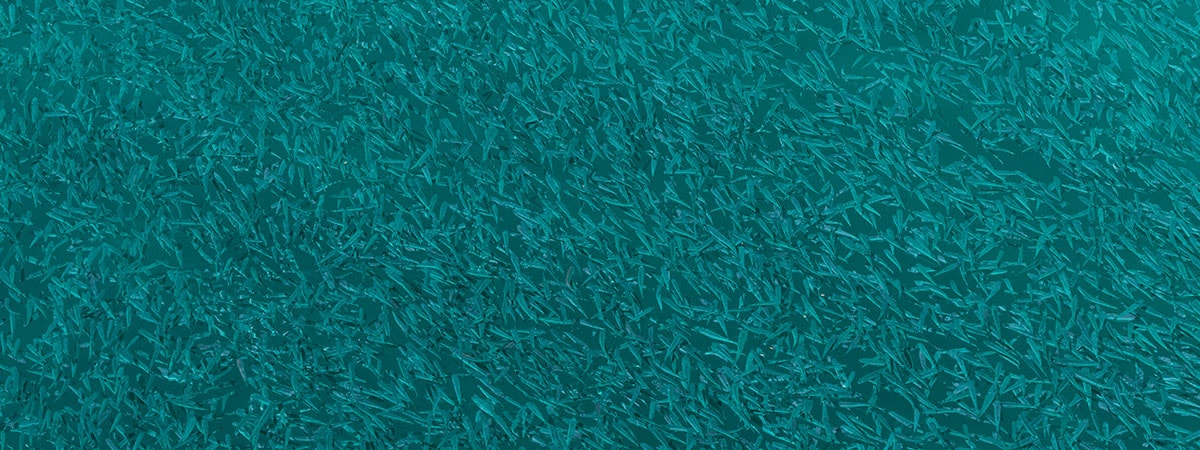Aquaculture facts

Aquaculture is comprehended as the breeding or cultivation of aquatic organisms (animals and/or plants), in which specific interventions during the upbringing are being made. Such interventions are feeding, (re-)stocking the specimen on a regular basis and all further interferences, which are necessary to maintain or increase the production.
The early beginnings of aquaculture are dated way back in China around 500 B.C. Since then, this cultivation form has been a permanent food supply for our society: in the ancient world the Romans mainly cultivated clams, during the Middle Ages carps were held in ponds by monastic orders and since the 19th hundreds it has been a way of keeping exotic fish in zoological gardens in Europe. Nowadays modern aquaculture processes are helping natural aquatic populations to recover and also provide a much needed supply of high-quality animal proteins for the growing world population. In 2016, every second eaten fish was held in an aquaculture farm.
There are many aspects to differ aquaculture systems; one way is to differentiate the systems regarding the water consumption and stocking density, thus the weight of cultured organism per cubic meter water volume (= kg/m³) – these options are called extensive, semi-intensive or intensive aquaculture. Furthermore, it can vary in terms of fresh water or saltwater usage as well as how the aquaculture system is interacting with the surrounding ecosystem. An open cultivation is in direct contact to the ecosystem, whereas a closed one has barely to no influence on the surrounding.
Conventional open aquaculture systems are ponds, floating net cages or flow-through facilities. The impact these have on the environment can be very grave: uneaten feed and the products of the metabolism excreted by the specimen (feces, carbon dioxide) can be transported into surrounded ecosystems and damage them, if the water and feed management is insufficient.
A possible solution therefore is a closed system (recirculating aquaculture system, abbr. RAS). A RAS by definition has a daily water exchange rate below 10% of the whole water volume of the facility. The most modern RAS like the SEAWATER Cube even accomplish a rate below 1%, hence a RAS is a nearly completely closed system. The required water quality is realized through the usage of multiple physical and biological water treatment processes. That is the reason for not needing a connection to natural waters and the location of the facility can be chosen without taking this into consideration.
Another advantage is, that important parameters like temperature, salinity, pH, particulate matter, germs or the concentrations of oxygen and carbon dioxide can be effectively controlled and with it the cultivation conditions can be optimized concerning the welfare of the animals. Compared to an open system, the impacts on the environment are simultaneously lowered upon a minimum.
The SEAWATER Cube and its treatment processes are not designed by the tolerable boundaries of the animals, but by maintaining a living environment at its best while providing the necessary saltwater quality.
Further informationen about the SEAWATER Cube
Check out more facts about our system and the technology.
References
— FAO (Food And Agriculture Organisation Of The United Nations), 2016. The State Of World Fisheries and Aquaculture. Rome
— European Inland Fisheries Advisory Commission, 1986
— Wu, R.S.S., 1995. The environmental impact of marine fish culture: Towards a sustainable future. Marine Pollution Bulletin 31, pp.159–66
— Sumari, O., 1982. A report on fish farm effluents in Finnland. Report of the EIFAC Workshop on Fish-Farm Effluents. EIFAC Technical Papers 41, pp.21–27.
— Pillay, T.V.R., 2004. Aquaculture and the environment. Second Edition ed. Oxford: Blackwell Publishing.
— Timmons, M.B. & Ebeling, J.M., 2010. Recirculating Aquaculture. 2nd ed. New York: Cayagua Aqua Ventures.
Image source
Colourbox, ID#9435269